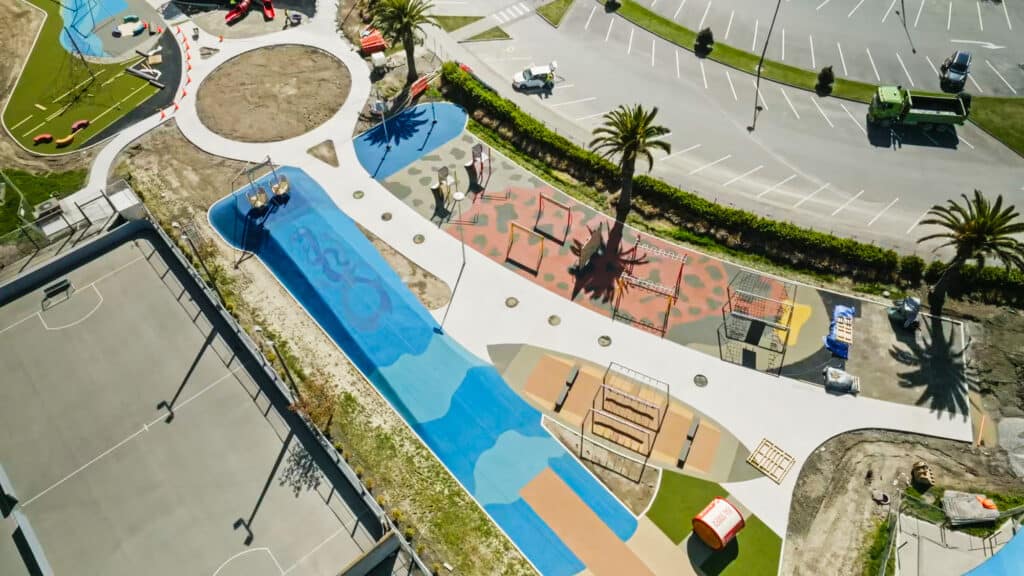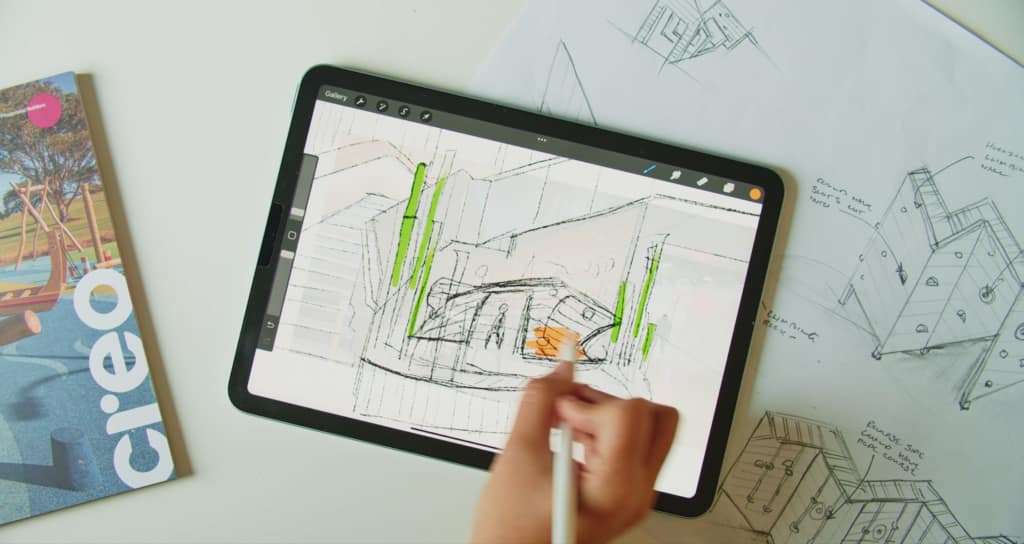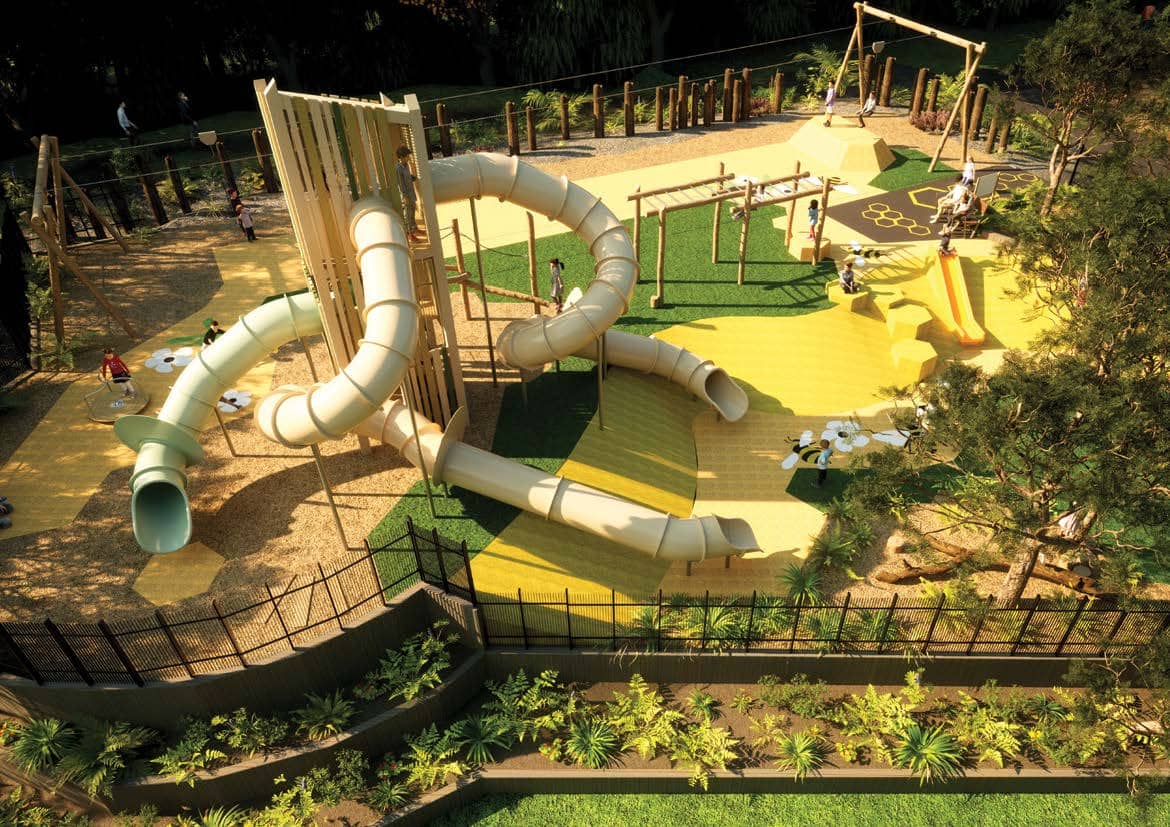Playgrounds are traditionally seen as areas with basic play equipment – poles, platforms, and slides. However, there’s a growing recognition that these spaces can be so much more.
They can be environments where both adults and children find joy and engagement, not just through physical play but also through the integration of art.
This fusion of art and play in playgrounds can transform them from standard play areas into unique, stimulating, and playful environments.

The Importance of Beautiful Spaces
The design of communal spaces plays a crucial role in our social and communal lives. Beyond their functional purpose, these areas should be places where people genuinely enjoy spending time and feel a sense of peace and belonging.
The power of aesthetically pleasing spaces lies in their ability to evoke emotions and foster connections, something that sterile, purely functional spaces often fail to achieve.
In playgrounds, the integration of beauty and play is particularly important. These are not just areas for physical activity but spaces where fun, learning, and art can coexist, helping people of all ages engage with their surroundings meaningfully.
Why Fun Places are Essential
Research in children’s behavioural studies consistently highlights the link between fun and learning. Engaging in enjoyable activities is recognised as one of the most effective ways to stimulate young minds.
It encourages children to challenge themselves, enhancing their motor skills, creativity, and social interactions. However, the traditional design of playgrounds often focuses solely on children, leaving adults on the benches.
The challenge lies in creating playgrounds that are equally enjoyable for adults. This can be achieved by including multi-generational playground equipment or designing playgrounds as interactive art pieces that captivate and engage all ages.

The Synergy of Art and Play
The integration of art and play in playgrounds offers a multitude of benefits. From an aesthetic standpoint, it can significantly enhance the visual appeal of these spaces.
Art in playgrounds can also establish a cultural connection, particularly when bespoke, locally inspired designs are implemented.
Collaborating with local artists supports the local arts scene and ensures that the playground reflects the community’s identity and heritage. This approach transforms playgrounds into spaces celebrating local culture and history, going beyond their traditional role as play areas.
Artistic playgrounds can become storytelling spaces where narratives are brought to life in a way that is engaging and interactive. This sparks children’s imagination and provides an educational dimension, making these stories more relatable and impactful.
The Broader Impact of Artistic Playgrounds
While standard playgrounds with their typical equipment are found everywhere, those that incorporate thoughtful design and local cultural elements can have a greater impact.
These playgrounds can evolve into community landmarks – places not just for play but for learning, socialising, and cultural exchange. They become destinations that draw people together, fostering community and belonging.
This transformation shows the true potential of playgrounds when they are designed with intention and creativity. Spaces that integrate art become more than just physical spaces; they are social and cultural hubs, reflecting the community’s identity and fostering a sense of belonging and connection.
Inspired to see how art can transform your community’s playgrounds? At Creo, our team of experienced designers specialises in creating playgrounds that are not just places to play but spaces that inspire, educate, and bring communities together. To explore how we can bring this vision to life in your community, call us at 08000 000 334 or email [email protected].




